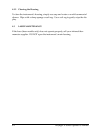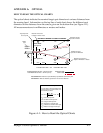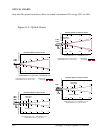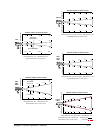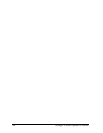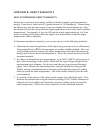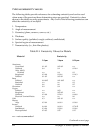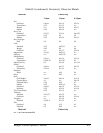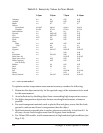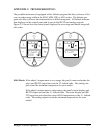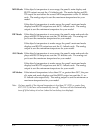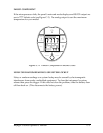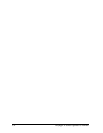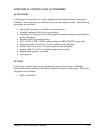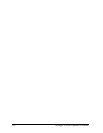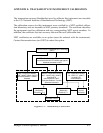
B-4 Raynger 3i Series Operator’s Manual
1.0µm 5.0µm 7.9µm 8-14µm
Asbestos 0.9 0.9 0.95 0.95
Asphalt n.r. 0.95 0.95 0.95
Basalt n.r. 0.7 0.7 0.7
Carbon
Unoxidized 0.8-0.95 0.8-0.9 0.8-0.9 0.8-0.9
Graphite 0.8-0.9 0.7-0.9 0.7-0.8 0.7-0.8
Carborundum n.r. 0.9 0.9 0.9
Ceramic 0.4 0.85-0.95 0.95 0.95
Clay n.r. 0.85-0.95 0.95 0.95
Concrete 0.65 0.9 0.95 0.95
Cloth n.r. 0.95 0.95 0.95
Glass
Plate n.r. 0.98 0.85 0.85
“Gob” n.r. 0.9 n.r. n.r.
Gravel n.r. 0.95 0.95 0.95
Gypsum n.r. 0.4-0.97 0.8-0.95 0.8-0.95
Ice n.r. — 0.98 0.98
Limestone n.r. 0.4-0.98 0.98 0.98
Paint (non-Al.) — 0.9-0.95 0.9-0.95
Paper (any color) n.r. 0.95 0.95 0.95
Plastic (opaque, n.r. 0.95 0.95 0.95
over 20 mils) n.r.
Rubber n.r. 0.9 0.95 0.95
Sand n.r. 0.9 0.9 0.9
Snow n.r. — 0.9 0.9
Soil n.r. — 0.9-0.98 0.9-0.98
Water n.r. — 0.93 0.93
Wood, Natural n.r. 0.9-0.95 0.9-0.95 0.9-0.95
To optimize surface temperature measurement accuracy consider the following:
1. Determine the object emissivity for the spectral range of the instrument to be used
for the measurement.
2. Avoid reflections by shielding object from surrounding high temperature sources.
3. For higher temperature objects use shorter wavelength instruments, whenever
possible.
4. For semi-transparent materials such as plastic film and glass, assure that the back-
ground is uniform and lower in temperature than the object.
5. Hold instrument perpendicular to surface whenever emissivity is less than 0.9. In
all cases, do not exceed angles more than 30 degrees from incidence.
6. For 1M and 2M models, avoid measurements in high ambient light conditions (see
Page 2-11).
Table B-2: Emissivity Values for Non-Metals
n.r. = not recommended



